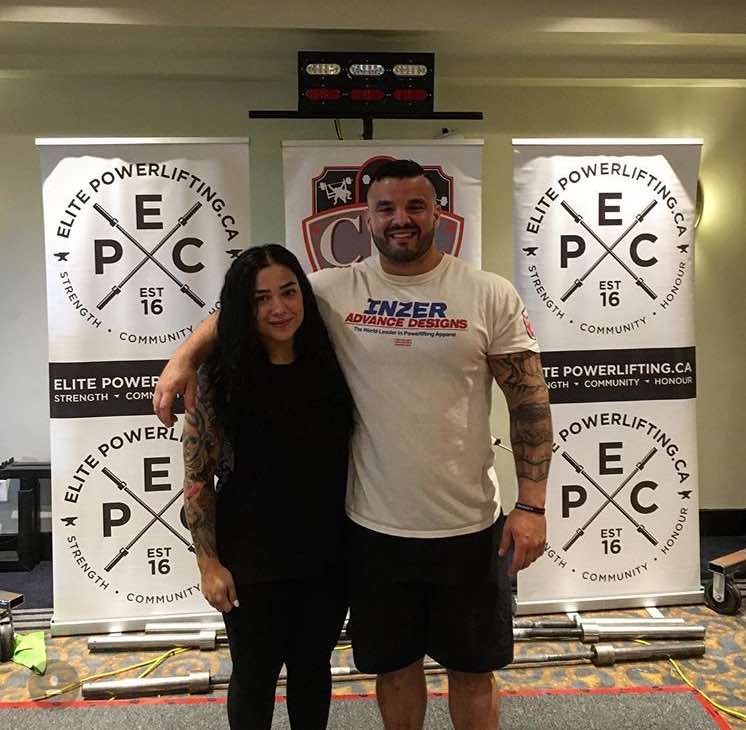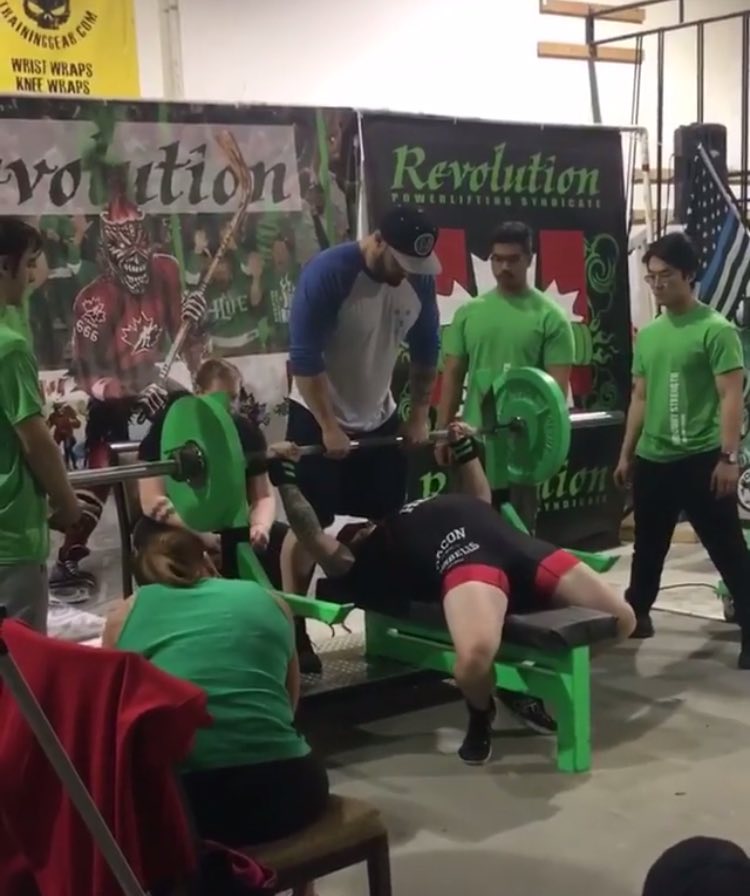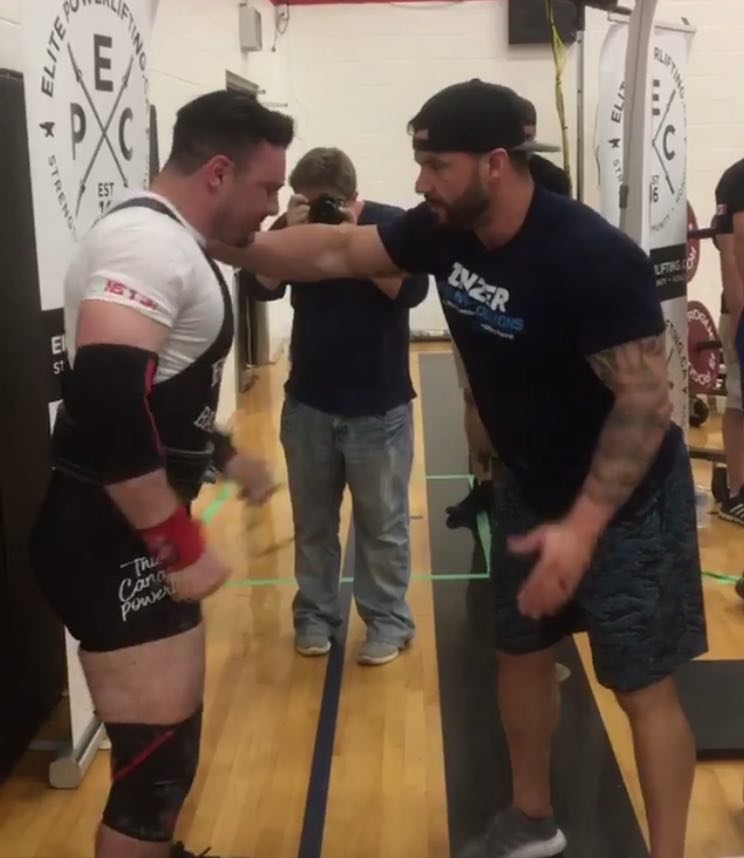
01 Oct A Coach’s Guide to Handling Multiple Lifters on Meet Day
By Paul Oneid
As a coach, meet day is when you earn your keep. It takes very little to write a cookie cut training cycle and recycle it over and over on the internet, but that is a conversation for another day. A real coach will show up on game day and make sure their lifters are in the best position to be successful. Now, handling one lifter is tough, but handling multiple lifters on the same day and not imploding is an art form. It takes a lot of planning and organization while being able to multitask.
Know the schedule
It is vital to know start times and who is in what flight – this is the basics. When you have multiple lifters, knowing where each person is within the day and within their own flight is paramount. Pick a spot to set up camp either at or near the flight list/ TV screen so you can easily peek over and double and triple check your timing. Know how many lifters are in each flight and how your lifters are dispersed within them. Doing so will enable you to plan and time warm-ups for some of your crew, while you actively coach the ones on the platform.
Have a plan A through Z for each lifter and KNOW IT!
You should know planned warm-ups, openers, and any computations of the attempt selections possible based on outcomes for all your lifters. No, this does not need to be memorized, in fact, it most certainly should not because inevitably, you will forget. Keep a notebook with you with a separate page for each lifter and their plan. Make sure they each have a copy of the same thing. They should have been involved in the process to develop it in the first place. This allows both you and the lifter to follow the plan. Now, it bears mentioning that very little in powerlifting meets, especially the bigger ones, ever goes to plan. You need to be flexible and troubleshoot on your feet. That cannot be done effectively if you are already flying by the seat of your pants. As changes are made, or as the steps in the plan unfold, write in the book so you can keep track. If you’re really on top of your plan, these should all be accounted for ahead of time and the planned attempts should read like a “pick your own adventure” novel.
Know the equipment
Who is wearing what? How many of your lifters are equipped? Lightly equipped? Naked? These variables will impact your timing for warm-ups and where you need to be and when. Situations will arise when you might have three lifters in the same flight wearing knee wraps and a multi-ply lifter in the warm-up room needing help with their suit. It happens! You need to know who needs what and when, so you can be there and provide it. The lifter doesn’t care that you have these responsibilities, nor should they. They’ve paid you to help them, and they deserve to get that help. In situations like these, communication is critical – “I need your bar loaded and gear on ready to be wrapped and squat when I get back from wrapping John. Be vocal and don’t let anyone skip your turn.”
*Bonus tip – If you are wrapping multiple peoples’ knees, be sure to run your hands under cold water numerous times (some even stick their hands into an ice-filled cooler). Anytime you have 2 minutes, do it. Your hands will get very stiff and sore, and your forearms will blow up. Get some cold water on them to discourage blood pooling and keep you feeling good. Applying Tiger Balm, or the like to the forearms is also a good trick.
Utilize your resources
This cannot be stressed enough. Very seldom will a lifter come to a meet alone. They will likely have a friend, spouse, family member, etc. come to watch and support them. You should encourage your lifters to bring people, both for encouragement and for your own selfish reasons (which they don’t need to know about). If you need to, use this person. No, do not use them for planning or decision making. Use them as a runner, plate loader, spotter, time checker, etc. Delegate menial tasks to them so that you can focus on the athlete. This might seem like minutia, but can make an enormous difference if you’re spread thin on time.
Know your lifters
This is a no-brainer, but bears mentioning. Know what type of lifter you are handling. Do they need to be hyped up, calmed down, soothed of their anxiety etc.? You need to be able to wear many hats as a coach on meet day. You need to put the athlete in the best place to succeed. This starts with the plan, but once that is in place you need to focus on the individual. Where is their head? How are they feeling? Ask questions! The art of coaching is nuanced and largely outside the scope of this article but the fact of the matter is that if you can’t coach the person, the plan is meaningless. It’s just words and numbers on a piece of paper.
Proper planning prevents poor performance. Know all the details and have a plan with multiple back up plans. Be disciplined and be able to adjust on the fly. You are the captain of the ship. Your athlete should not need to think about anything besides the execution of the lift. Show your athletes that you are invested in seeing their training through to the finish. The hardest working person on meet day should be YOU!
If you’d like to read more from Paul, including his training log leading into his next meet, click HERE. To learn how to develop your plan and look good doing it, check out the book 10/20/Life 2nd Edition and grab some of the NEW SWAG in the PRS Store.
Paul Oneid
Latest posts by Paul Oneid (see all)
- A Proposition for a Paradigm of Planning Your Personal Periodization - March 4, 2019
- Paul Oneid –> Off-Season | Feet Up Bench PR and Some Squats - March 1, 2019
- Paul Oneid –> Off-Season | A bit of everything - February 21, 2019







Sorry, the comment form is closed at this time.